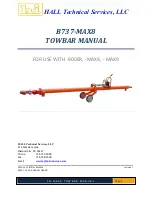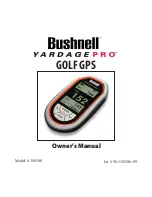
HALL Technical Services, LLC
T B - M A X 9 T O W B A R M A N U A L
Page 4
3.
Operating Procedures
3.1.
Responsibility
•
Operator of the tractor must understand that it is his/her responsibility to move the aircraft
safely in accordance with the aircraft manufacturers operational procedures.
•
Employer of tractor operator is responsible for providing sufficient operator training to
ensure safe operation of towbar for pushback and towing operations
The following are recommendations.
3.2.
Inspect the Towbar prior to each use:
3.2.1.
Visually inspect shear pin for correct installation and that it is the correct shear pin
marked 737-MAX8(see image below). Verify that shear pin is not broken.
3.2.2.
Visually verify that the Pivot bolt nut is present on underside of adapter.
3.2.3.
Visually inspect towbar tube for cracks at welded joints.
3.2.4.
Visually inspect tow eye assembly for damage and loose or missing hardware.
3.2.5.
Visually inspect wheel carriage for damage and loose or missing components.
3.2.6.
Visually inspect adapter to tube flange bolts (Torque as required 80 lb-ft).
3.2.7.
Check head latch mechanism for proper travel and locking action in both forward
and back positions. Inspect for damage and loose or missing components.
WARNING!
DO NOT attempt to push or tow an aircraft with a damaged towbar.
3.3.
Use the correct size Aircraft Tow Tractor:
An important consideration for safe movement of an aircraft is using the correct category of tractor
for pushback and towing operations. Incidents are more likely to occur when using a tractor that is
either too large or too small for a particular aircraft. Consult the Aircraft Manufacturers Ground
THE FOLLOWING IS A RECOMMENDATION ONLY. ALWAYS
FOLLOW AIRCRAFT MANUFACTURERS PROCEDURES AND AIRLINE
SPECIFIC OPERATING PROCEDURES FOR PUSHBACK AND TOWING
OPERATIONS

































